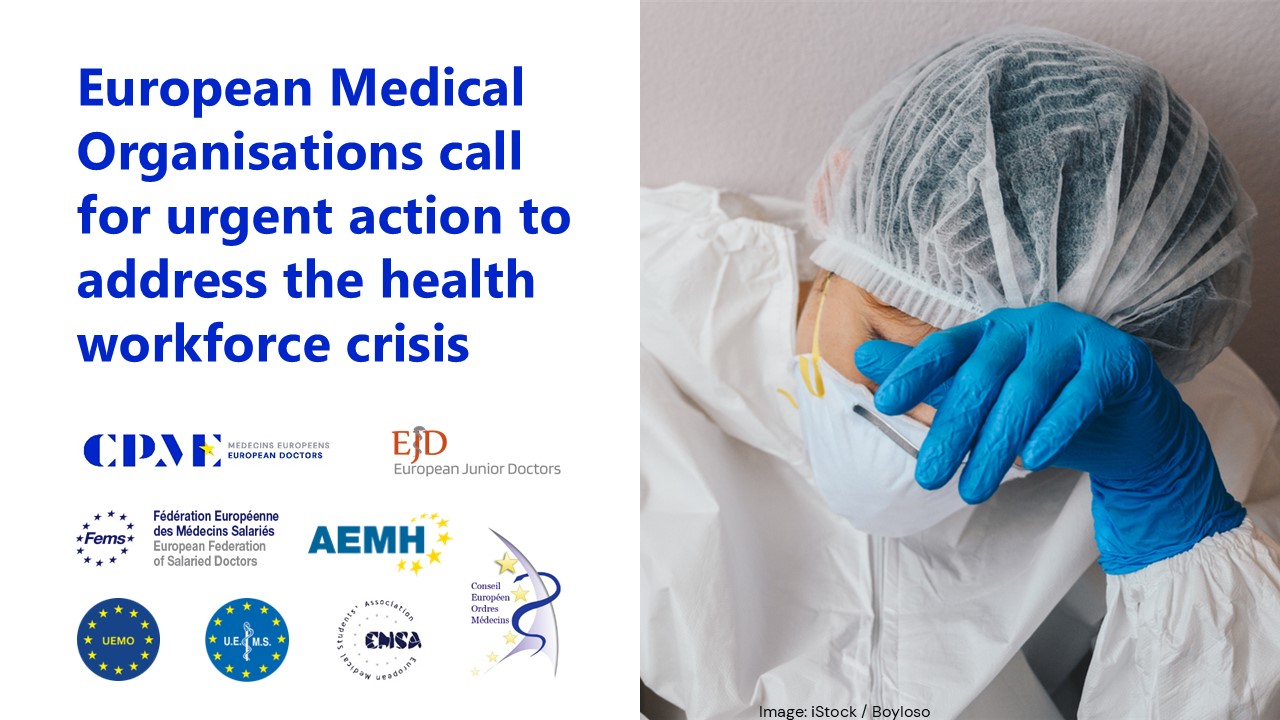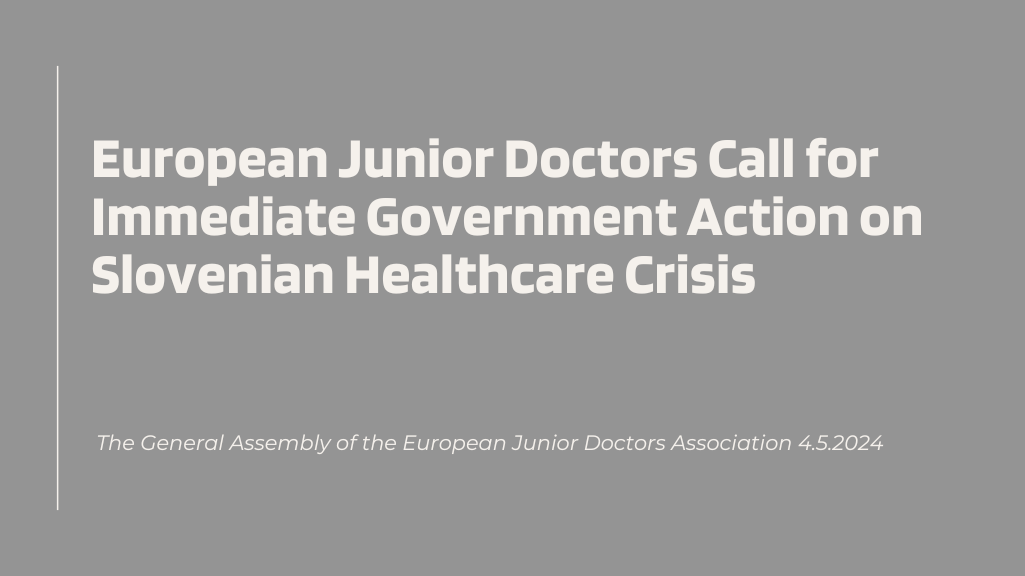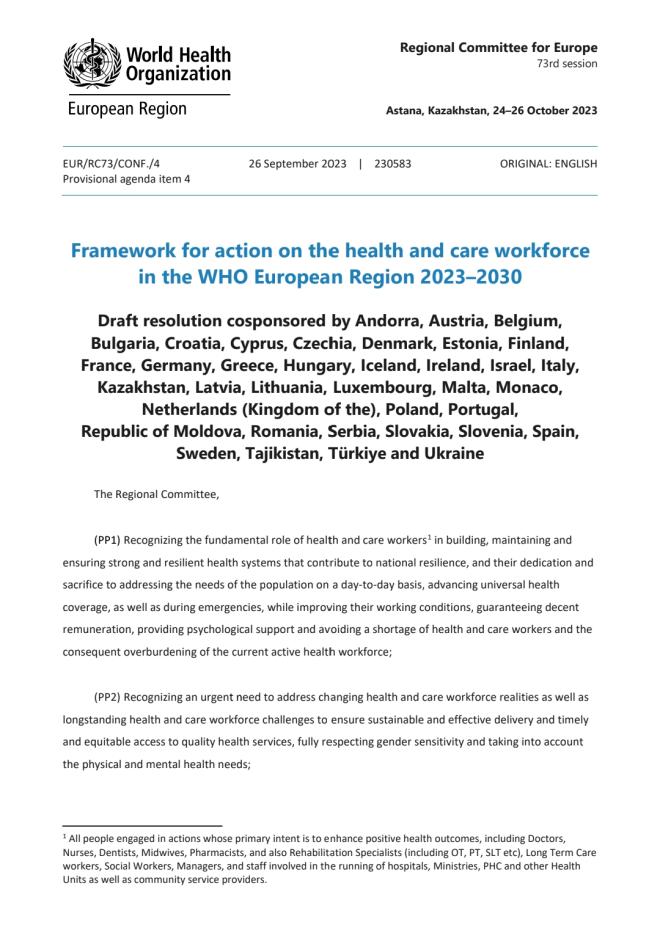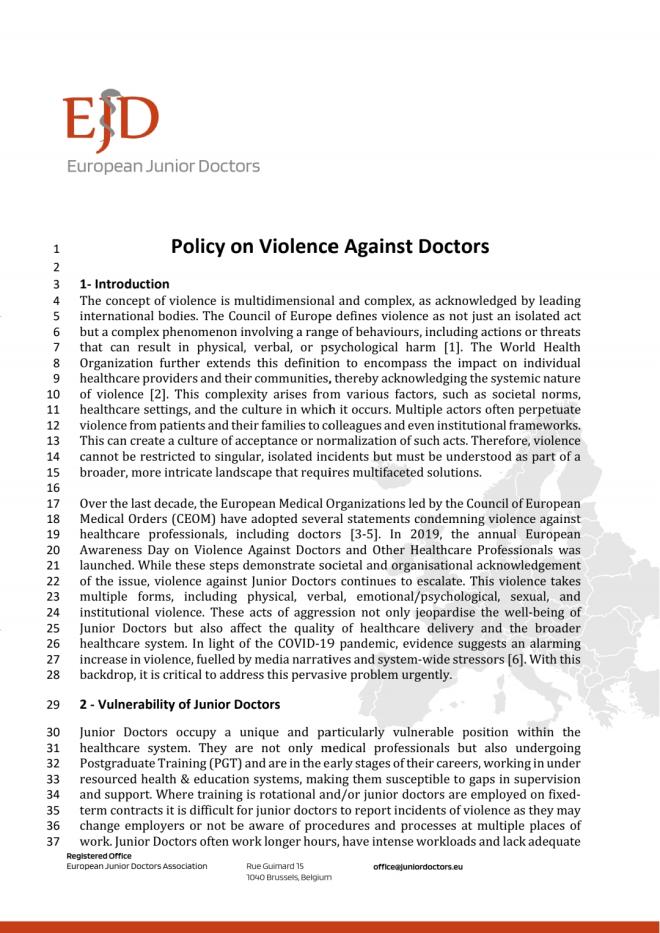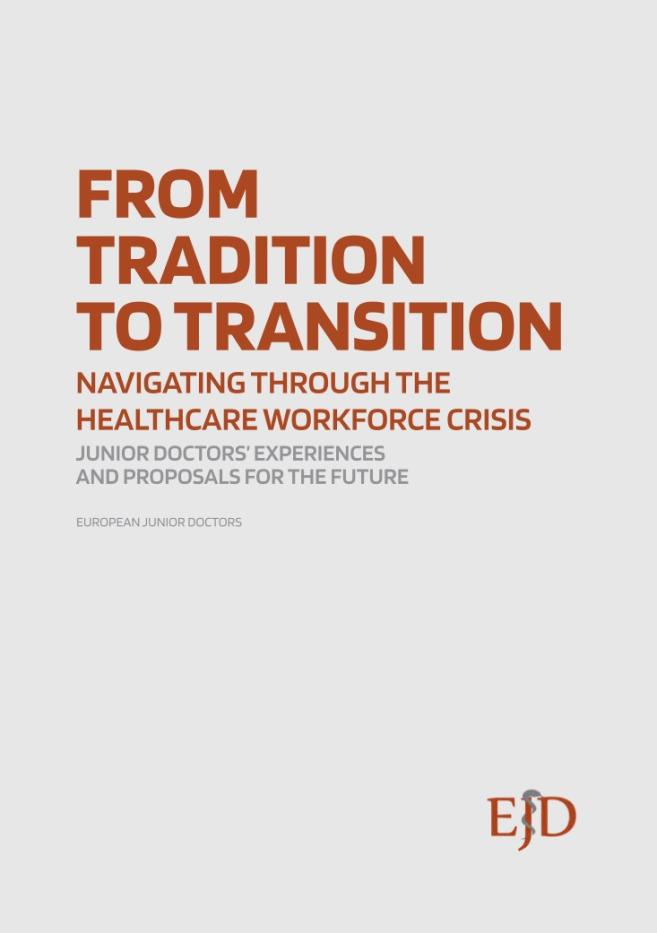Medical Workforce
Medical Workforce Planning
In the last decades, there has been a tendency change from a period of surplus of doctors to one of deficit. The European Junior Doctors Association (EJD) warned in the 1990s about the changing demographic tendencies in society and in doctors’ population: increasing health needs derived from an ageing population and the retirement of physicians from the baby boom generation. An EU-Commission led initiative warned in 2012 that by the year 2020 there was going to be an estimated shortage of 230.000 doctors in Europe.
The deficit was aggravated by austerity policies in the health sector after the 2008 economic crisis, which shrank health budgets and lead to suboptimal working conditions for health workers. Furthermore, the COVID-19 pandemic was a stress test to an already tensioned workforce. The WHO estimates that nearly 50.000 health workers died globally as a direct result of the virus. Many doctors have suffered from health problems resulting from the pandemic and working conditions; we are seeing staggering rates of burnout and, in some cases, doctors are considering abandoning the workforce.
Even before the COVID-19 pandemic began in 2020, junior doctors across Europe had been warning about the absence of adequate workforce planning, the distressing working and training conditions junior doctors and healthcare professionals face and the consequences on wellbeing and patient care. Junior doctors across Europe report excessive working hours and workload, lack of rest during and between shifts, lack of training opportunities and widespread institutional violence. Alarming rates of burnout and other mental health problems have resulted in many junior doctors leaving and considering leaving the workforce. A contracting workforce facing increasing healthcare demands nurtures this vicious cycle. Two and a half years later these issues remain unaddressed, and Europe is facing new compounding challenges, notably financial recession and energy crisis; the perfect storm for the implosion of healthcare in Europe.
Our organisation is currently working on understanding this phenomenon in Europe and trying to elucidate the questions of how is the lack of doctors affecting junior doctors? Is it the same in different countries? What solutions can be advocated for to be implemented? If you want to know more about our projects you can read the documents listed below.
DOCUMENTS
- EJD’s Policy on Health Workforce
- MWF Planning In Europe Overview And 2022 Preliminary Survey Results
- PWG - From Surplus To Deficit.
Free movement
On the rise of global shortage of medical professionals across the globe, we see the new challenges that are junior colleagues are more and more facing every day. The new regulations that getting more and more popular across Europe are restricting the fundamental rights of free movement of junior doctors. As doctors more often than ever before are obliged to remain in their home countries to provide service for several years, we believe that free movement, ability to share or gain experience is essential to secure continuous progress for the medical profession.

Doctors wellbeing
While the burnout rates amongst the doctors are constantly increasing, protecting the well-being of our junior colleagues remains a top priority for EJD. We believe that only using the wide network of EJD we can have an extensive understanding of current challenges and provide universal and well-discussed solutions that could improve well - being for a majority of Junior Doctors across Europe.
Associated Links
Associated Files
Medical Workforce
Find here our latest postings on the subject "Medical Workforce".-
European Parliament event on the future of Family Medicine / General Practice
EJD presented its perspectives on the situation of the workforce and advocated for the recognition of the speciality.
More › -
European Medical Organisations urge action to address the health workforce crisis
European Medical Organisations urge immediate and coordinated action to address the health workforce crisis
More › -
European Junior Doctors support Greek doctors under pressure
The General Assembly of the European Junior Doctors Association expresses its support and solidarity with our medical colleagues in Greece during this challenging period.
More › -
EJD Calls for Immediate Government Action on Slovenian Healthcare Crisis
The General Assembly of the European Junior Doctors Association stands in solidarity with its Slovenian colleagues who are currently mobilising for the improvement of the healthcare systemand better working conditions.
More › -
Resolution: Framework for Action on the Health and Care Workforce in the WHO European Region 2023–2030
At the 73rd Regional Committee for Europe held in Astana, 24–26 October 2023, the 53 countries in the Region unanimously adopted a Resolution in support of a new Framework for Action on the Health and Care Workforce.
More › -
Policy on Violence Against Doctors
Adopted at the General Assembly in Murcia, Spain, on 27 September 2023.
More › -
Breaking News: EJD's Qualitative Research Report on Medical Workforce Published
From Tradition to Transition | Navigating Through the Healthcare Workforce Crisis - Junior Doctors' Experiences and Proposals for the Future
More ›


